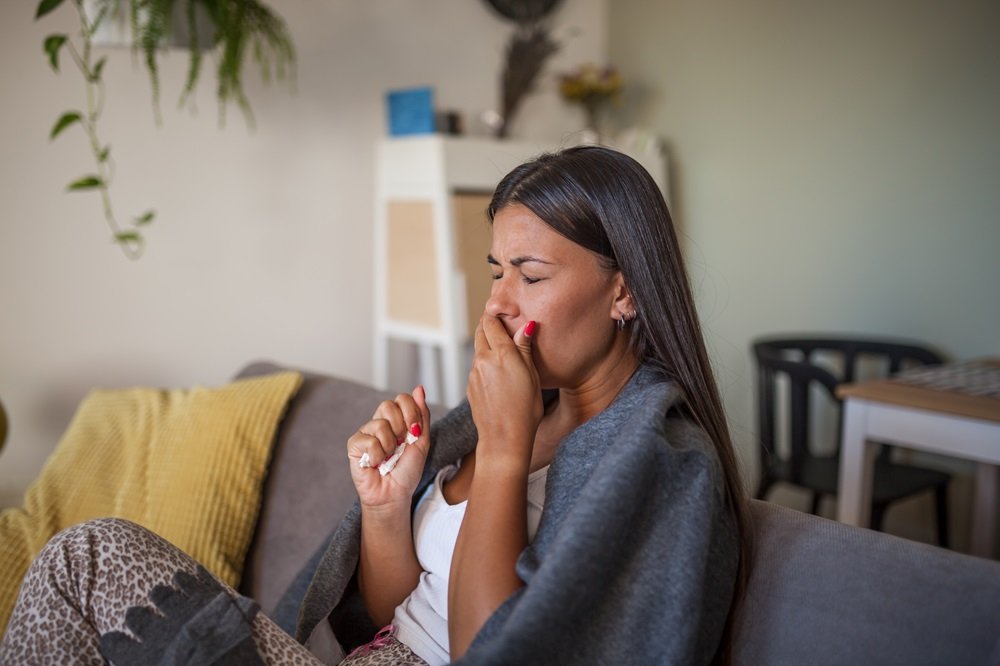
- May 24, 2024
- drsfurtimann
- 0
Allergic rhinitis is an allergic condition that causes sneezing, nasal congestion, itchy nose and watery eyes.
Common allergens that trigger allergic rhinitis are pollen, pet dander, mold, dust mites and insects.
This condition greatly hampers quality of life, but you can find relief with early diagnosis, allergen testing and avoidance, lifestyle changes, allergy medications and immunotherapy (allergy shots).
What causes allergic rhinitis or hay fever?
Allergic rhinitis occurs when body’s immune system reacts to an allergen in the air. The irritants can be easily inhaled them through your nose or mouth.
Allergens are harmless to most people. But if you have an allergy , the immune system tries to protect your body by releasing natural chemicals into your bloodstream. The main chemical is called histamine.
It causes mucous membranes in the nose, eyes and throat to become inflamed.
Allergic rhinitis causing common allergens:
- House dust mites that are tiny 2mm organisms live in carpets, drapes, bedding and furniture.
- Pollen from trees, grass and weeds.
- Pet dander (tiny flakes of dead skin cells) from cats or dogs.
- Mold spores.
- Cockroaches (their saliva and waste).
Sometimes, food allergies can also cause inflammation in your nose and throat.
What are the risk factors for allergic rhinitis?
Allergies are inherited, which means you’re more likely to have it if you have a parent or immediate family member with allergies.
People who have asthma or eczema are also more likely to develop allergic rhinitis.
Diagnosis and Tests
Patients’ symptoms and clinical examination is a reliable way to diagnose allergic rhinitis.
A blood allergy tesd measures antibodies to an allergen in a sample of your blood. This blood test is called an immunoglobulin E (IgE) test can detect most types of allergies.
Serum Phadiatop is another blood test that gives an idea about allergy.
To determine the specific cause of allergy a skin prick test is done.
In a skin prick test, your doctor places a small sample of different allergens on your skin (usually on your forearm or back). They scratch or prick your skin with a needle. If you’re allergic to a specific allergen, the area will become red, itchy and irritated in 15 to 30 minutes.
Management and Treatment
Antihistamines
Antihistamine medications- They work by blocking the histamine that your body releases during an allergic response. Common examples are:-
- Loratadine
- Cetirizine
- Fexofenadine
- Levocetirizine
Decongestants
These medications relieve congestion in your nose and sinuses. You can take decongestants by mouth or use a nasal spray. They include:
- Phenylephrine
- Pseudoephedrine
Corticosteroid nasal sprays
These sprays and inhalers reduce inflammation and relieve symptoms of hay fever.
Leukotriene inhibitors
During an allergic reaction, your body releases leukotrienes. The most common leukotriene inhibitor is montelukast.
Immunotherapy
This treatment works by helping your body learn to tolerate allergens. Your provider gives you a series of injections (subcutaneous immunotherapy) or oral ( sublingual immunotherapy) with a small amount of the allergen.
Every time you get a shot, your doctor increases the amount of the allergen. Over time, your immune system develops immunity to the allergen and stops launching a reaction to it.
WHAT NOT TO DO DURING ALLERGY SEASON?
- Avoid taking more medication than recommended.
- Avoid hanging sheets or clothing out to dry.
- Avoid mowing lawns or be around freshly cut grass.
- Avoid overwatering indoor plants.
- Avoid dust exposure by wearing masks.
- Avoid all airborne contaminants such as dusts, sprays, mists, smokes and fumes.
How long does allergic rhinitis last?
Most people find relief from hay fever within a few days with medication, but they must avoid the triggering allergens and take treatment as advised.
Some people continue to have symptoms for several weeks or months, especially if they aren’t taking or can’t take medication to help relieve symptoms.
